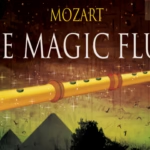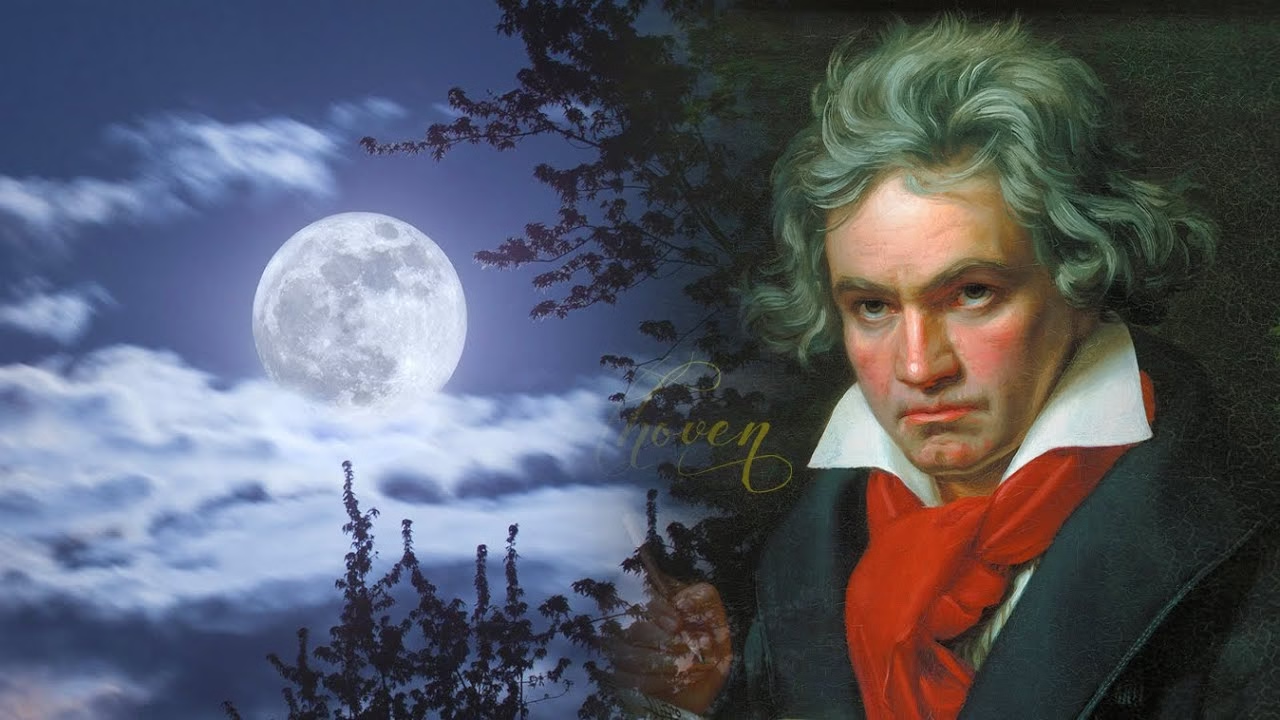The Mass in B minor, composed by Johann Sebastian Bach, is not merely a cornerstone of sacred music; it stands as an enduring testament to humanity’s quest for spiritual understanding through art. As one of Bach’s last completed works, the composition encapsulates both his artistic genius and his profound engagement with theological themes. In this exploration, we will delve into the intricate structure of the Mass, its historical significance and legacy, and the varied interpretations that have emerged throughout time. Each element contributes to a greater understanding of how this monumental work resonates with audiences today, inviting us to reflect on our own experiences of faith and existence.
The Structure of the Masterpiece
The Mass in B minor presents itself as a grand tapestry, intricately woven with musical threads that serve various purposes within the liturgical context. At first glance, the sheer complexity and diversity of the composition can be overwhelming. However, upon closer inspection, the meticulous attention to detail reveals a work that is both challenging and rewarding for performers and listeners alike.
Liturgical Significance
Bach’s decision to compose a complete setting of the Ordinary of the Mass—Kyrie, Gloria, Credo, Sanctus, and Agnus Dei—provides the framework for the entire piece. Each section carries its own unique emotional weight and thematic content. The Kyrie opens with a somber plea for mercy, characterized by haunting harmonies that echo the human condition’s fragile nature. This invitation to introspection sets the tone for the rest of the composition, establishing a spiritual atmosphere that permeates the subsequent sections.
As we transition into the Gloria, the mood shifts dramatically. The jubilant orchestration and exuberant choral writing celebrate divine glory and provide a stark contrast to the earlier solemnity. Here, Bach showcases his brilliance by blending voices and instruments in such a way that the listener is enveloped in a rich soundscape that radiates joy and reverence.
Each section unfolds like a chapter in a sacred narrative, allowing performers to express the depth of their artistry while engaging with complex theological concepts. Therefore, the Mass in B minor transcends mere religious function—it becomes an exploration of faith itself.
A Tapestry of Musical Forms
Bach’s mastery over various musical forms is evident throughout the Mass in B minor. The composer interweaves elements of counterpoint, harmony, and orchestration to create a cohesive and multifaceted work. The intricate interplay between different vocal lines, along with the lush instrumental textures, invites performers to explore an array of expressive possibilities.
For instance, in the Credo, the affirmations of faith are articulated through distinct musical phrases, each representing key tenets of belief. The varied styles—from the somber introspection of the “Crucifixus” to the triumphant proclamation of “Et resurrexit”—allow performers to navigate a wide emotional spectrum. This rich layering of sound encourages a deeper connection with the audience, fostering a shared experience of contemplation and reverence.
Moreover, Bach employs innovative techniques, such as the use of chorales and arias, to further enrich the auditory experience. These elements act as musical reflections, providing moments of stillness amidst the dynamic choral passages. This careful balance demonstrates Bach’s ability to convey complex emotional states while maintaining clarity and coherence in his musical vision.
The Emotional and Spiritual Depth
At its core, the Mass in B minor serves as a profound exploration of the human experience through the lens of spirituality. The emotional depth inherent in Bach’s music challenges listeners to confront their own beliefs, doubts, and aspirations. Each phrase embodies a range of sentiments—from anguished cries for mercy to ecstatic celebrations of faith—inviting introspection at every turn.
Consider the poignant textures of the Agnus Dei, where the plea for peace resonates with a sense of longing and vulnerability. The delicate intertwining of voices evokes feelings of surrender, urging listeners to reflect on their own spiritual journeys. In this moment, Bach’s music becomes a conduit for personal revelation, encouraging audiences to question the nature of belief and the role of divine grace in their lives.
In essence, the Mass in B minor transcends its liturgical context. It offers a universal commentary on the human spirit, inspiring listeners to find meaning through the language of music. By engaging with the work, individuals embark on a journey of self-discovery, navigating the complexities of life and faith in search of transcendence.
Recordings: A Journey Through Time

As the centuries have progressed, the Mass in B minor has become a cultural touchstone, giving rise to countless recordings that reflect a multitude of interpretations. Each rendition offers a fresh perspective on Bach’s masterpiece, allowing audiences to engage with the music on new levels. The evolution of recording technology has only served to amplify the accessibility of this monumental work.
Diverse Interpretations
One of the most fascinating aspects of the Mass in B minor is how diverse interpretations can evoke different responses from listeners. Various conductors and ensembles approach the work with their own artistic visions, emphasizing particular elements that resonate with their unique backgrounds. Some recordings may focus on the grandeur of the choral segments, showcasing the power and majesty of the ensemble.
Conversely, other interpretations may highlight the subtleties of soloists, drawing attention to the intimate conversations between voice and instrument. These interpretations allow for nuanced explorations of emotion, revealing layers of meaning that may not be immediately apparent in a more traditional performance. Listening to varied renditions grants audiences the opportunity to discover aspects of the composition they may have previously overlooked.
This diversity of interpretation ultimately enriches the listening experience, encouraging individuals to engage with Bach’s music from multiple angles. Each new performance brings forth unique nuances, thus altering our understanding of the original composition.
The Digital Age and Accessibility
In today’s digital landscape, platforms such as Spotify and Apple Music have revolutionized how we experience music. With just a click, audiences gain immediate access to a wealth of recordings of the Mass in B minor, spanning different styles, eras, and cultural contexts. This ease of access allows listeners to traverse the vast array of performances available, fostering a deeper appreciation for Bach’s work.
With the prevalence of streaming services, individuals can explore lesser-known interpretations alongside renowned performances, broadening their exposure to various artistic expressions. This democratization of music allows listeners to form personal connections with the Mass in B minor, forging relationships with the music that transcend geographical and temporal boundaries.
Furthermore, the digital age facilitates a communal experience, as enthusiasts can share their favorite interpretations and insights through social media platforms. This sense of community reinforces the timeless relevance of Bach’s masterpiece, allowing it to continue inspiring discussions about the intersection of art and faith.
Engaging with Recordings
Listening actively to recordings of the Mass in B minor can lead to transformative experiences. As you immerse yourself in the music, take time to reflect on what resonates with you personally. Perhaps a specific aria or choral passage stirs emotions that provoke contemplation, prompting you to consider your own beliefs and experiences.
Engaging with varied interpretations fosters a deeper connection to the piece. Listen attentively to how different performers articulate the musical phrases, noticing the contrasts in tempo, dynamics, and expression. Each interpretation provides a window into the artist’s vision and allows you to appreciate the richness of Bach’s composition on multiple levels.
Ultimately, the recordings of the Mass in B minor serve as a bridge to the past while simultaneously inviting contemporary audiences to explore their own spiritual journeys. Through these diverse interpretations, Bach’s music continues to inspire, challenge, and uplift.
The Legacy and Impact of the Mass in B Minor

The impact of the Mass in B minor extends far beyond the realm of music; it has become a cultural phenomenon that prompts deep reflection on the relationship between art and faith. Throughout history, the work has inspired countless discussions regarding the nature of belief, the role of music in worship, and how artistic expression serves as a conduit for spiritual reflection.
Cultural Touchstone
Since its completion, the Mass in B minor has established itself as a pivotal work in the canon of Western classical music. Musicians and audiences alike have embraced its beauty, complexity, and emotional depth, situating it at the intersection of art and spirituality. The work has been performed in concert halls, cathedrals, and festivals across the globe, connecting generations through shared experiences of transcendence.
As a cultural touchstone, the Mass invites individuals to grapple with profound questions about the nature of faith and the role of artistic expression. The evocative power of Bach’s music challenges listeners to confront their own beliefs while exploring the universality of spiritual themes. Its continued relevance serves as a reminder that the pursuit of meaning is a timeless endeavor.
A Reflection of the Baroque Ethos
The Mass in B minor embodies the ethos of the Baroque period—a time characterized by elaborate ornamentation, emotional intensity, and a fascination with the divine. Bach’s final work encapsulates the complex emotional states of his era, striking a delicate balance between devotion, doubt, and wonder.
As one navigates the various sections of the Mass, the listener is transported through a range of sentiments that reflect the intricacies of human experience. From the fervent pleas for mercy in the Kyrie to the jubilant celebrations of faith in the Gloria, Bach captures the turmoil and triumph intrinsic to the human condition.
This emotional depth resonates with contemporary audiences, highlighting the ongoing relevance of Bach’s exploration of spirituality. The Mass in B minor serves as a mirror reflecting our own struggles and aspirations, beckoning us to contemplate the mysteries of existence and faith.
Bridging Generations
The Mass in B minor continues to bridge generational divides, offering a timeless invitation for listeners to reflect on their own lives within the broader context of existence. Whether experienced in a live performance or through a digital recording, the work fosters a sense of unity among those who engage with it.
Imagine attending a live performance of the Mass in B minor. As the choir begins singing the Kyrie, you are enveloped in a profound stillness, the harmonies lifting your spirits and inviting contemplation. This moment of connection highlights how music can penetrate the soul, stirring feelings that words often fail to express.
The communal experience of listening together fosters a sense of shared humanity amid the complexities of life and belief. Thus, the Mass in B minor stands not just as a testament to Bach’s genius but also as a living entity that continues to resonate with contemporary audiences. Its rich layers continue to inspire and challenge us, urging us to find meaning through the universal language of music.
Conclusion

The Mass in B minor remains a monumental work that transcends the boundaries of time and culture, inviting audiences to engage with its profound emotional depth and spiritual significance. Through its intricate structure, diverse interpretations, and enduring legacy, Bach’s composition speaks to the heart of the human experience, challenging us to reflect on our own beliefs and journeys.
As we navigate the complexities of life, the Mass in B minor serves as a guiding light, illuminating the path toward understanding and transcendence. Whether experienced in a concert hall or streamed through digital platforms, the music continues to inspire, reminding us of the powerful connection between art, faith, and the universal quest for meaning. Ultimately, the Mass in B minor stands as both a celebration of Bach’s genius and a timeless invitation to explore the depths of our own spiritual journeys through the beauty of sound.









Cobie Botha
September 10, 2024Thanks you for sharing! For mane old lonely people this is one of their only enjoyments in their lives!
John Son
September 10, 2024good luck